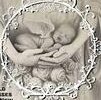Dalam dunia perjudian online, aplikasi wargatoto menjadi salah satu pilihan populer bagi para penggemar togel. Situs wargatoto menawarkan berbagai kemudahan dan keuntungan bagi penggunanya, mulai dari proses pendaftaran yang sederhana hingga berbagai jenis permainan togel yang bisa diakses dengan mudah. Bagi Anda yang tertarik untuk mencoba peruntungan dalam dunia togel, mengetahui cara menggunakan aplikasi wargatoto bisa menjadi langkah awal yang penting. Artikel ini akan memberikan panduan lengkap tentang penggunaan aplikasi wargatoto, termasuk cara mengakses link alternatif wargatoto untuk memastikan Anda dapat selalu terhubung dengan situs togel yang Anda inginkan. Dengan pemahaman yang baik tentang fungsi dan fitur yang ditawarkan oleh aplikasi wargatoto, Anda akan dapat memaksimalkan pengalaman bermain Anda di situs togel online. Mari kita mulai menjelajahi semua hal mengenai wargatoto dan bagaimana cara terbaik untuk memanfaatkannya. Apa itu Wargatoto? Wargatoto adalah sebuah platform yang menyediakan layanan permainan togel secara online. Dalam beberapa tahun terakhir, situs ini semakin populer di kalangan penggemar togel, menawarkan berbagai jenis permainan dan opsi yang menarik. Dengan kemudahan akses dan fitur-fitur yang memudahkan pengguna, Wargatoto menjadi salah satu pilihan utama bagi mereka yang ingin bermain togel secara aman dan nyaman. Situs Wargatoto menawarkan pengalaman bermain yang terintegrasi dengan teknologi terkini. Pengguna dapat mengakses berbagai permainan togel dari seluruh dunia dengan hanya menggunakan perangkat mereka. Melalui situs ini, pemain dapat memilih angka, memprediksi hasil, dan menikmati berbagai promosi menarik yang ditawarkan oleh platform tersebut. Selain itu, Wargatoto juga menyediakan link alternatif untuk memastikan akses yang stabil dan lancar. Hal ini penting, terutama ketika situs utama mengalami gangguan. Dengan adanya link alternatif Wargatoto, pengguna tidak perlu khawatir kehilangan kesempatan untuk bermain dan menikmati setiap momen dalam permainan togel yang mereka pilih. Keunggulan Aplikasi Wargatoto Aplikasi Wargatoto menawarkan kemudahan akses bagi para pengguna yang ingin bermain togel secara online. Dengan antarmuka yang user-friendly, pengguna dapat dengan cepat mempelajari cara menggunakan aplikasi ini tanpa kesulitan. Berbeda dengan situs wargatoto yang mungkin memerlukan waktu lebih untuk memuat, aplikasi ini memberikan pengalaman yang lebih responsif dan efisien. Salah satu keunggulan utama dari aplikasi Wargatoto adalah fitur keamanan yang canggih. Wargatoto Dengan sistem enkripsi yang kuat, data pribadi dan transaksi pengguna dilindungi dengan baik. Ini menjadi salah satu alasan mengapa banyak pemain pilih menggunakan aplikasi ini dibandingkan situs togel online lainnya yang mungkin kurang memperhatikan aspek keamanan. Selain itu, aplikasi Wargatoto menyediakan berbagai promo dan bonus menarik yang tidak selalu tersedia di situs wargatoto. Pengguna dapat menikmati peluang bonus yang menguntungkan, meningkatkan pengalaman bermain togel mereka. Dengan pembaruan rutin, aplikasi ini juga terus menghadirkan fitur baru yang memperkaya pengalaman pengguna. Link Alternatif Wargatoto Untuk mengakses situs Wargatoto, pengguna sering kali perlu menggunakan link alternatif. Hal ini disebabkan oleh berbagai alasan, seperti pemblokiran atau masalah teknis yang dapat menghambat akses ke situs utama. Link alternatif ini dirancang untuk memberikan pengalaman yang sama dengan situs asli, sehingga pemain tetap dapat menikmati permainan togel secara online. Situs Wargatoto biasanya menyediakan beberapa link alternatif yang dapat diakses oleh pengguna. Link-link ini sering diperbarui untuk memastikan bahwa pemain selalu memiliki opsi untuk masuk ke platform tanpa hambatan. Penting bagi pengguna untuk selalu mencari informasi terbaru mengenai link alternatif ini, agar tidak terjebak dalam kesulitan akses saat ingin bermain. Penggunaan link alternatif bukan hanya sekedar untuk mengakses situs, tetapi juga bisa membantu menjaga keamanan informasi akun pengguna. Dengan menggunakan link resmi yang disediakan oleh situs Wargatoto, pemain dapat memastikan bahwa mereka tidak terjebak dalam situs palsu yang dapat membahayakan data pribadi mereka. Oleh karena itu, selalu pastikan untuk menggunakan link alternatif yang resmi dan terpercaya. Cara Daftar dan Menggunakan Wargatoto Untuk mendaftar di situs Wargatoto, langkah pertama yang perlu Anda lakukan adalah mengunjungi laman resmi situs Wargatoto melalui link alternatif yang tersedia. Setelah tiba di halaman utama, cari tombol pendaftaran atau daftar yang biasanya terletak di bagian atas layar. Klik tombol tersebut untuk memulai proses pendaftaran. Anda akan diminta untuk mengisi informasi pribadi seperti nama, email, dan nomor telepon. Pastikan data yang Anda masukkan adalah benar agar tidak mengalami masalah saat proses verifikasi. Setelah mengisi formulir pendaftaran, Anda perlu memverifikasi akun Anda. Cek email yang Anda daftarkan untuk menemukan tautan verifikasi dari Wargatoto. Klik tautan tersebut untuk mengaktifkan akun Anda. Setelah akun aktif, Anda dapat kembali ke situs Wargatoto dan masuk menggunakan email dan kata sandi yang telah Anda buat. Ini adalah langkah penting untuk memastikan keamanan akun Anda. Setelah berhasil masuk, Anda dapat mulai menjelajahi aplikasi Wargatoto. Di dalam aplikasi, Anda akan menemukan berbagai jenis permainan togel yang ditawarkan. Pastikan untuk membaca panduan dan syarat yang berlaku sebelum mulai bermain. Anda juga bisa melakukan deposit atau penarikan dengan mudah melalui metode pembayaran yang tersedia di situs togel ini. Nikmati pengalaman bermain yang aman dan menyenangkan di Wargatoto! Tips Bermain Togel Secara Aman Dalam bermain togel, penting untuk selalu memilih situs yang terpercaya seperti situs wargatoto. Pastikan situs yang Anda kunjungi memiliki lisensi resmi dan ulasan positif dari pengguna lain. Hal ini akan membantu meminimalisir risiko penipuan dan memberikan jaminan keamanan saat melakukan transaksi. Selalu gunakan link alternatif wargatoto yang disediakan oleh situs resmi. Link alternatif ini biasanya digunakan untuk menghindari pemblokiran akses, sehingga Anda dapat tetap bermain tanpa hambatan. Periksa secara berkala untuk memastikan Anda mengakses link yang aman dan terbaru. Terakhir, tetapkan batasan untuk diri sendiri. Tentukan berapa banyak uang yang akan Anda habiskan dan jangan melebihi batas tersebut. Bermain togel seharusnya menjadi hiburan, jadi penting untuk tidak terjebak dalam permainan yang berisiko. Dengan mengikuti tips ini, Anda dapat menikmati permainan secara aman dan bertanggung jawab.
